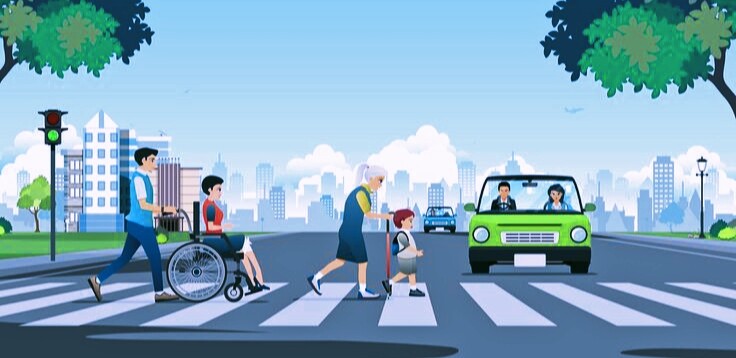Accessible Transport in India: Improving Mobility for Persons with Disabilities
Transportation is an essential aspect of daily life, providing individuals with the means to travel to work, school, healthcare appointments, and other essential destinations. For people with disabilities in India, however, transportation is often a significant obstacle to full participation in society. Many individuals with disabilities face significant barriers when it comes to accessing public transportation, making it difficult or impossible for them to travel independently and maintain their mobility.
Improving accessibility for persons with disabilities in India’s transportation system is essential to ensure that everyone can participate fully in society. While there have been some efforts to improve transportation accessibility in recent years, there is still a long way to go. In this blog post, we will explore the current state of accessible transport in India and the steps that can be taken to improve mobility for persons with disabilities.
Current State of Accessible Transport in India
India has made some strides towards improving accessibility in transportation, but there is still a significant gap when it comes to providing accessible transportation for persons with disabilities. Public transportation systems such as buses, trains, and metros are often inaccessible, with inaccessible vehicles and infrastructure, lack of trained staff, and information on accessibility, and low availability of services in rural and remote areas. Private transportation providers such as taxis and ride-hailing services are often untrained and not equipped to serve passengers with disabilities. For individuals with disabilities, navigating the transportation system can be a daunting task, often requiring extra planning and assistance.
The lack of accessible transportation options can have a significant impact on the lives of persons with disabilities in India. Many individuals with disabilities are unable to travel independently, making it difficult for them to access education, healthcare, employment, and other essential services. The lack of accessible transportation options also limits social and recreational opportunities, leaving many individuals with disabilities feeling isolated and excluded from their communities.
Steps to Improve Mobility for Persons with Disabilities
Improving accessibility in transportation requires a multi-faceted approach that involves policymakers, transportation providers, and the disability community. Some steps that can be taken to improve mobility for persons with disabilities in India include:
- Developing and enforcing accessibility standards: India needs to develop and enforce accessibility standards that ensure that all modes of transportation are accessible to persons with disabilities. This could include designing accessible infrastructure, providing accessible vehicles, and training staff to assist passengers with disabilities.
- Increasing awareness of accessibility: There needs to be a greater awareness of accessibility and the needs of persons with disabilities among transportation providers, policymakers, and the public. This could include providing training to transportation providers, promoting awareness campaigns, and involving persons with disabilities in decision-making processes.
- Expanding accessible transportation options: India needs to expand accessible transportation options, including public transportation systems, private transportation providers, and community-based services. This could involve investing in accessible infrastructure, providing incentives for transportation providers to serve passengers with disabilities, and developing community-based transportation services.
- Involving the disability community: Persons with disabilities should be involved in the planning and implementation of transportation services. This could include establishing advisory committees or involving persons with disabilities in decision-making processes to ensure that their needs are being addressed.
Conclusion
Accessible transportation is essential to ensuring that all individuals can participate fully in society. While India has made some progress towards improving accessibility in transportation, there is still a long way to go. Improving accessibility in transportation requires a collaborative effort between policymakers, transportation providers, and the disability community. By developing and enforcing accessibility standards, increasing awareness of accessibility, expanding accessible transportation options, and involving the disability community, India can take steps to improve mobility for persons with disabilities and promote inclusivity and social justice.

